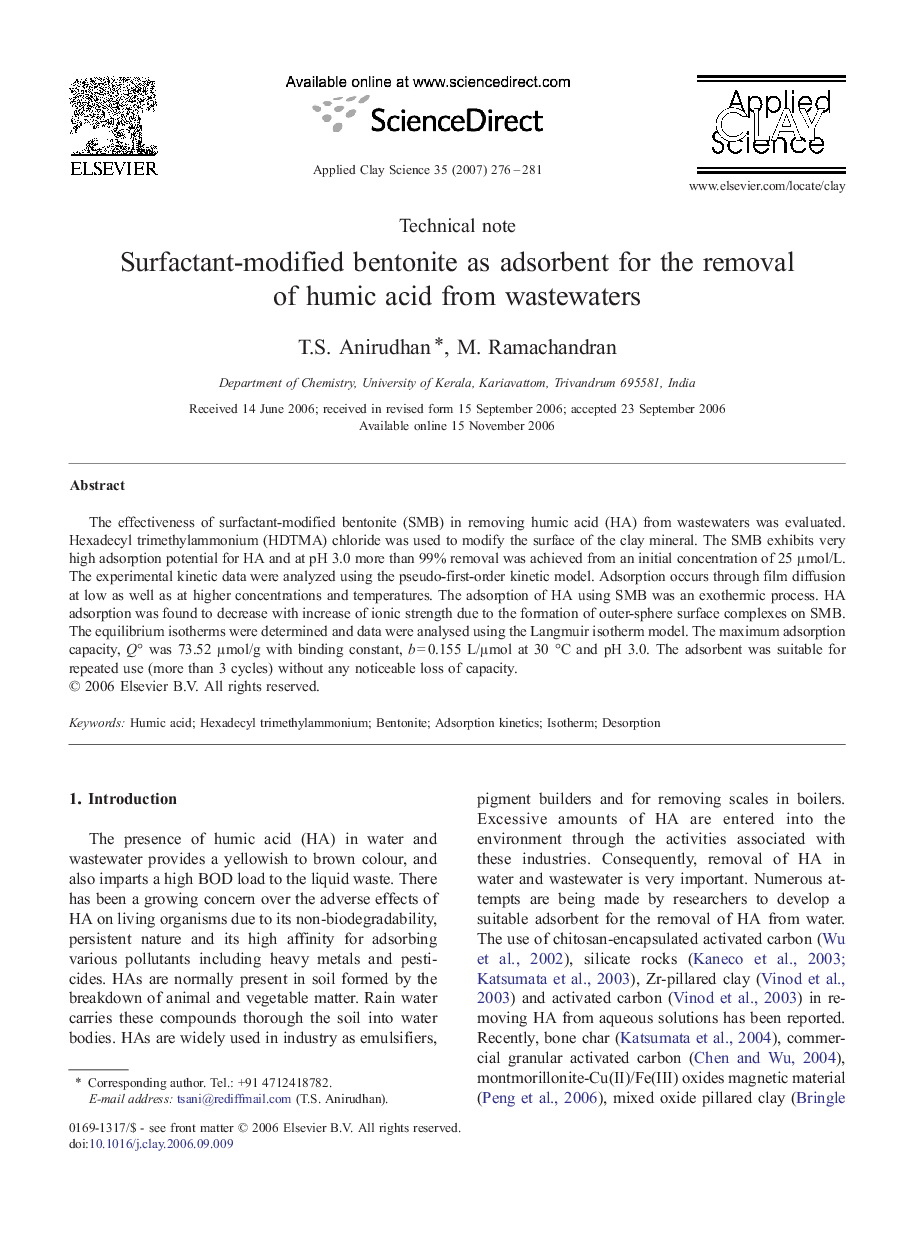| Article ID | Journal | Published Year | Pages | File Type |
|---|---|---|---|---|
| 1696615 | Applied Clay Science | 2007 | 6 Pages |
Abstract
The effectiveness of surfactant-modified bentonite (SMB) in removing humic acid (HA) from wastewaters was evaluated. Hexadecyl trimethylammonium (HDTMA) chloride was used to modify the surface of the clay mineral. The SMB exhibits very high adsorption potential for HA and at pH 3.0 more than 99% removal was achieved from an initial concentration of 25 μmol/L. The experimental kinetic data were analyzed using the pseudo-first-order kinetic model. Adsorption occurs through film diffusion at low as well as at higher concentrations and temperatures. The adsorption of HA using SMB was an exothermic process. HA adsorption was found to decrease with increase of ionic strength due to the formation of outer-sphere surface complexes on SMB. The equilibrium isotherms were determined and data were analysed using the Langmuir isotherm model. The maximum adsorption capacity, Q° was 73.52 μmol/g with binding constant, b = 0.155 L/μmol at 30 °C and pH 3.0. The adsorbent was suitable for repeated use (more than 3 cycles) without any noticeable loss of capacity.
Related Topics
Physical Sciences and Engineering
Earth and Planetary Sciences
Geochemistry and Petrology
Authors
T.S. Anirudhan, M. Ramachandran,
